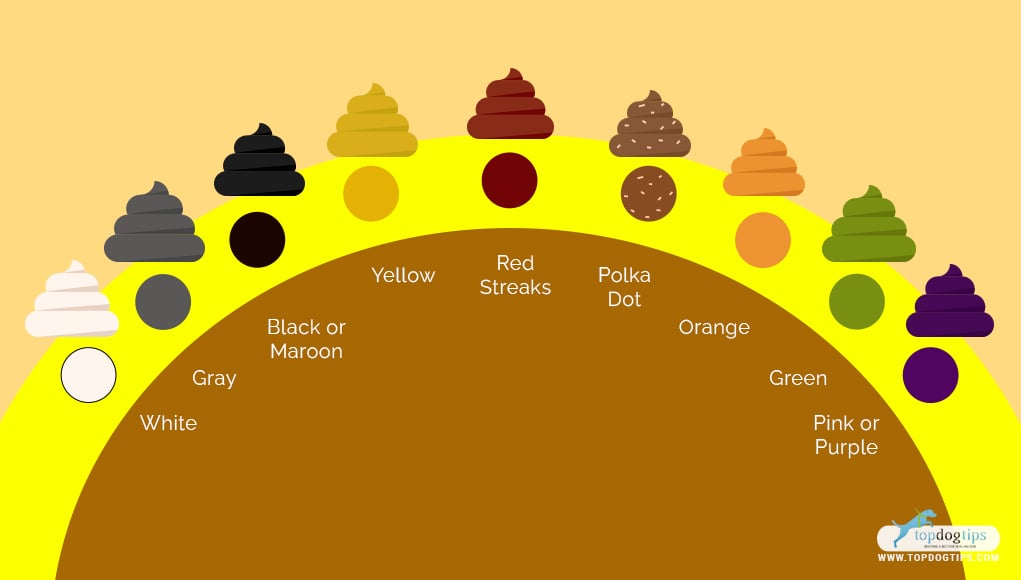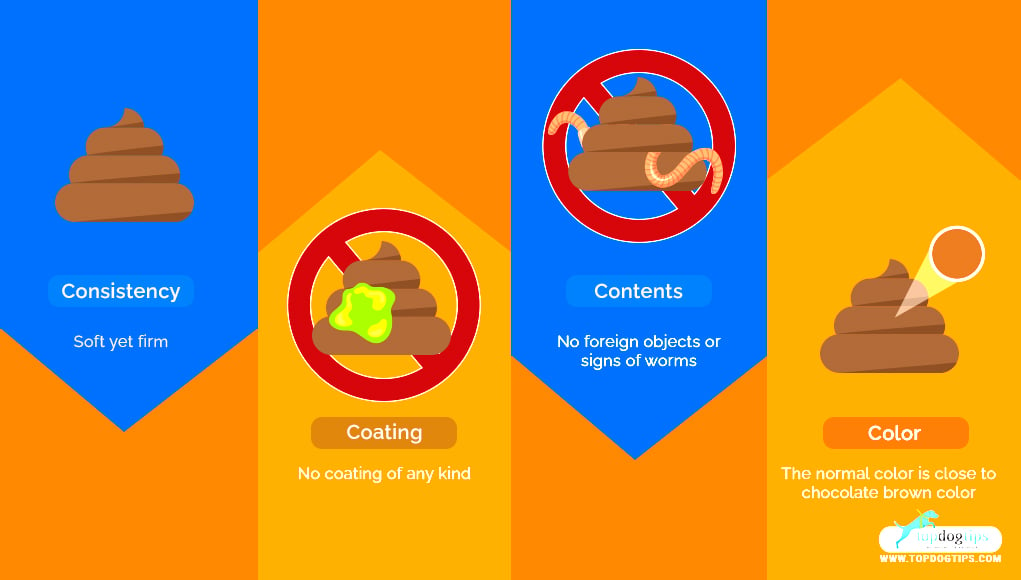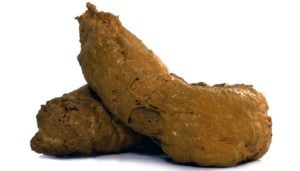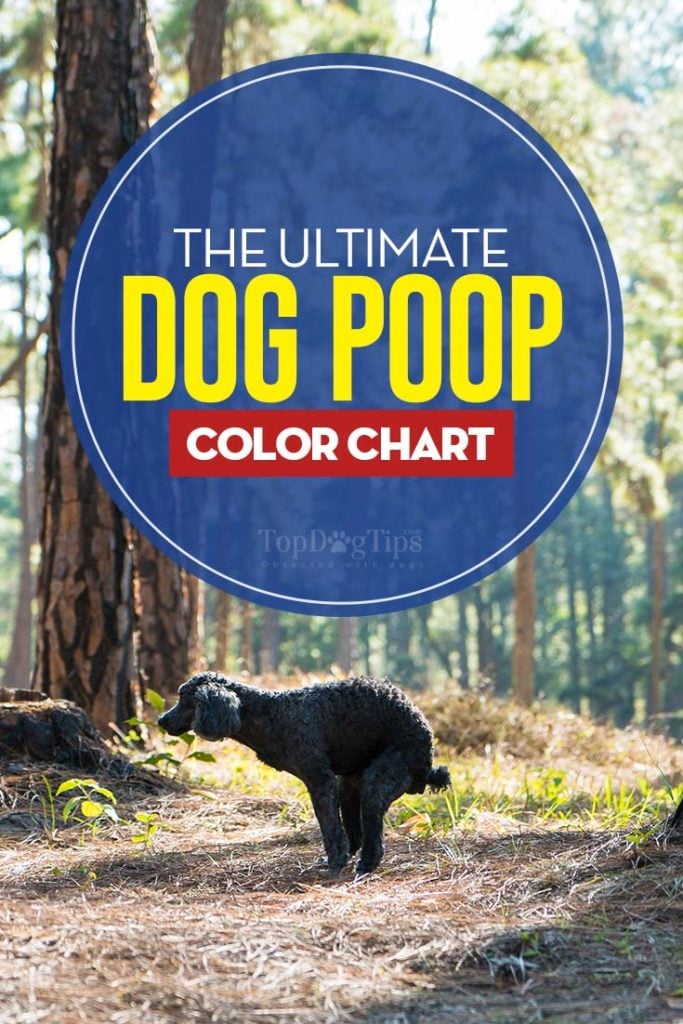KEY TAKEAWAYS:
– Poop color is a good indicator of any underlying health concerns your dog may have.
– Your dog's diet, the presence of blood, bacterial infection, pancreatic and liver issues are some of the common reasons of dog poop discoloration.
– A dog's normal poop color should be chocolate brown. It should be moist yet firm, and log-shaped.
– Having your dog's stool sample analyzed at the vet's clinic is the best way to know the reason behind the dog poop color.
Table of Contents
Our dogs' poops can be as colorful as what they eat.
But what if it's not just something you feed them? What if it's something concerning already?
If your pup's suddenly colorful stool worries you, let us guide you on what to do.
Dr. Myles Rowley, DVM, one of our resident vet experts, helped shed light on your dogs' poop concerns, what their colors mean, and what you can do to fix them.
Click to jump to each section:
- Dog Poop Color Chart Guide (with pictures)
- The 4 C's of Dog Poop
- What a normal poop must look like
- Does your dog's poop smell strong?
- How to take a stool sample
- Common questions other pet owners ask
The Dog Poop Color Chart Guide

Our dogs' poop says a lot about their health.
Their stools are not just excrement; they can also tell you what's happening inside Fido's body.
If you didn't feed them anything colorful recently, but their poop looked like they ate a crayon, then that could mean something that requires medical attention.
Experts say that different dog poop colors are associated with your dog's digestive ability.
Digestive tolerance reflects the reaction of the animal to the diet, and it can be assessed by determining fecal quality (consistency, moisture, volume, odor, and color). (Source)
This study also claims that the protein source of your dog's diet directly affects their poop quality.
Age and body weight are some things to factor in, too, especially with how frequently they do number two.
Refer to the following section on what the different colors of dog poop looks like and what they likely mean.
Black or Maroon
As weird as it sounds, your dog can have a stool that is very dark, black, and tarry.
Sometimes, it's normal, especially if you always see them have this.
Also, if your dog poop has been sitting out for a while before you noticed, chances are it was a brown one that turned black as it oxidized.
But if you see it exit Fido's body as black or dark maroon when they normally don't, it can be a sign of bleeding in the gastrointestinal tract.
At this rate, the blood has been digested in your dog's gut, hence, the dark color.
Possible causes of a black- or maroon-colored dog poop are:
- Internal bleeding
- Parasites like tapeworms or hookworms
- Reaction to medications or supplements, like NSAIDs.
- Toxic ingestion like rat poison
We have discussed more about black dog poops in this article.
White
White is definitely not a color you should be seeing on dog stools.
Sometimes dogs on a raw food diet may exhibit white poop because of its bone content.
In fact, it's mostly feeding Fido bones that causes this.
My dog, Lily, used to munch bones from boiled chicken (not the leg part as that's risky; only the softer, thinner bones like in thighs.) As a result, I noticed her poop always looked like the picture above.
Too much bone can cause white, brittle, and crumbly poop, which could indicate too much calcium.
And too much calcium in dogs can cause hypercalcemia (abnormal levels of calcium in the body), which, in turn, can make your dog constipated, among other symptoms.
To learn more about this, check out our white dog poop article.
Gray
If your dog is producing gray or pale-colored poop, there are a few potential causes that should be investigated.
One common reason is dietary fat malabsorption, which occurs when the dog's diet contains too much fat.
Sometimes, it can also mean that the pancreas is not functioning properly to produce enough enzymes to digest the fat (a.k.a. Exocrine Pancreatic Insufficiency or EPI.)
This results in undigested fat appearing in the stool and giving it a pale, greasy texture.
Liver disease can also lead to gray poop due to decreased bile production by the liver, which helps the body digest and absorb nutrients.
Orange
Another poop color that might be caused by liver issues is orange stool.
If not the liver, then it could be issues in the bile duct or the gallbladder.
An orange poop can mean that food passes through quickly in their gut, and the bile does not have enough time to break them down.
Bile is what gives a healthy poop its chocolate brown color.
Some ingredients in a dog's food, especially homemade ones, can also cause their stool to be orange-colored, like rice or chicken, or most often in my dog's case—carrots.
We wrote an article about orange dog poop to discuss this in more detail.
Yellow
Yellow dog poop color can indicate a few things.
It can mean a typical stomach upset or food intolerance.
When this happens, you need to look at your dog’s diet and recall which ingredient or food has been added recently that could possibly cause this yellow stool.
In most cases, this dog poop color can just mean that Fido may have eaten food or any object (I hope not!) that's colored yellow.
Warning: A slimy, yellow mucus on your dog's poop can be due to intestinal inflammation.
This could be the protective mucus layer that's either shed or gets damaged in your dog's intestines.
This inflammation is often caused by the following factors:
- Parasites
- Sharp objects
- Food intolerance
- Bacterial infection
In severe conditions, your dog's poop can have red streaks and has stronger yellow-orange color.
Green
There are a few potential causes of your dog pooping green—diet-related or medical reasons.
If your pup ate grass, green vegetables (broccoli or green beans). or any commercial dog food or treats that are green in color, then each or all could be the culprit.
But if not, it could be:
- Intestinal infection caused by giardia, Salmonella, or Campylobacter
- Intestinal blockage that prevents waste passage which may turn stool green
- Excessive zinc intake from medicines or supplements can also discolor our dog's poop to green
Issues in the pancreas and liver can also result in green-tinted stool.
Check out our Green Dog Poop: What You Need to Know article for more information about this stool problem.
Red or Red-streaked Poop
If your dog has brown poop with red streaks or a clearly red dog poop color, internal bleeding might be happening somewhere along Fido's large intestine.
There are different possible reasons for digestive bleeding in dogs: parasites, ulcers, inflammatory bowel disease, or eating something they shouldn't.
If they have swallowed something sharp (plastic, needle, bone, etc.), this could tear the intestinal lining and cause bleeding on their way out.
Some plants, medications, or chemicals may also cause gastrointestinal bleeding.
Another possible cause of red or red-streaked poop is Anal gland issues, where the impacted or infected anal sacs may lead to bleeding and discoloration of stool.
Dr. Rowley has a reminder if your dog has bloody red poop.
Generally, if the stool is still somewhat formed and your dog still has normal energy levels and a good appetite, this is not an emergency.
Some at-home remedies that can help treat inflammation of the colon are probiotics and a bland diet such as chicken, rice, and pumpkin.
If the bloody stool continues, becomes watery, or if your dog becomes lethargic, stop treating at home and call your veterinarian for an appointment.
– Dr. Myles Rowley, DVM
As you may have noticed, a red dog poop's cause is similar to a black poop—blood. The only difference is where the internal bleeding was located.
The blood in a red poop is more recent, which means the bleeding could've happened somewhere in the lower portion of their GI tract.
The blood in a black poop, on the other hand, is mostly likely digested and older, hence the oxidized black color.
Pink or Purple
While eating berries, vegetables, or dyed treats can cause your dog's stool to look pink or purple in color, another possible reason is Hemorrhagic Gastroenteritis or HGE.
Here, the poop not only resembles a raspberry or ube jam in color, but also in consistency.
HGE is a sudden illness that causes the stomach and intestines to bleed badly, leading to dehydration if not treated right away with IV fluids and other vet care.
If you notice pink or purple stool along with the following symptoms, consult your veterinarian immediately:
- vomiting
- diarrhea
- loss of appetite
- lethargy
Without prompt treatment, the dog can become very ill.
Many dogs die from HGE every year that could have been saved if they had prompt medical treatment.
And we don't want this happening to our dogs.
Polka Dot
Polka dot poop? No, it's not cute. Not even a bit.
If you notice that your dog’s poop looks like it’s full of rice, then this can be worms.
This isn't necessarily a dog poop color, but it is worth noting.
There are a few different types of worms you might see.
If you see something that looks like small, white threads, then those might be roundworms.
But if there are tiny rice-like segments, those might be tapeworms.
Apart from the treatment, you must also clean your house and backyard thoroughly to avoid the spread and reinfection from happening.
The best thing you can do is call your veterinarian and let them know that you are seeing what you suspect are tapeworms.
They will likely recommend that you check a fecal sample for other parasites and pick up a prescription dewormer called Praziquantel.
Tapeworms come from your dog eating fleas, so it will be important to make sure your dog is on monthly flea prevention and treat your yard and home for fleas.
– Dr. Myles Rowley DVM
Always Keep Track of Your Dog's Poop Based on the 4 C's!
Taking care of adorable dogs comes with occupational hazards. And yes, one of those is cleaning their poop.
Every time you take Fido out for a walk or even just inside the yard, you must pay attention to what's happening in the potty department.
It’s a good way to know what’s going on with your dog's body. The scoop is in their poop!
Whatever changes or weird things you see or smell in their stool can warrant a visit to the vet to ensure that it's not something serious or life-threatening.
But what does a normal poop look like, you ask?
To check, we can refer to the veterinarians' guide, known as the 4 Cs of dog poop.

The 4 C's of Dog Poop
Consistency
This may be one of the first things you'll notice when you pick up your dog’s poop.
Gross as it might sound, your dog’s poop should be generally soft yet firm.
If you notice a watery consistency in your dog’s poop, then it can be a sign of an upset stomach.
However, if the poop seems too hard (and your pet is straining), the dog may have constipation.
These things often work themselves out, but if they don’t, your pup needs a change in diet.
Coating
There should be no coating of any kind on your dog’s poop.
If there is mucus or a significant amount of blood, you should call your vet immediately.
Even if it's not bloody diarrhea, coating or mucus over a dog's poop is one of the more concerning signs that require immediate attention.
In some cases, poop coating or mucus could be the result of the following:
-
- Colitis
- Giardia
- Hookworm
- Roundworm
Contents
When you are looking at your pet's poop contents, you are looking for anything that is out of the ordinary.
These could be things your dog is eating that they shouldn’t be, or you may find signs of worms.
If you find anything that seems concerning, you should call your veterinarian with questions.
Color
Finally, when you are looking at the color of your dog’s poop, you should consider that it can mean something different.
And it tells you a lot about the dog's health condition, too.
That said, there are many health problems associated with specific colors of dog poop.
So, if you see a change or something out of the ordinary, check with your vet immediately.
RELATED: 15 Dog Poop Facts You Don't Want To Be Reading About
What a Normal Dog Poop Should Be
So, with all that said, what does a normal dog poop should look like?
The normal color of your dog’s poop should be close to a chocolate brown color, as pictured on the right.
Apart from that, you can also tell that dog poop is generally healthy if:
Color: The color can range from brown to yellow to almost black, depending on the dog's diet and individual factors. As long as the color is consistent, it's usually normal.
Consistency: The stool should be firm but moist, like play dough or peanut butter. It should not be too hard, dry, or crumbly, nor should it be too soft or liquidy.
Size and shape: Poops may be small and round or long and cylindrical. As long as the size and shape are consistent, it's usually normal.
Frequency: This depends on the dog's diet, size, age, and individual factors, but most dogs poop 1-2 times daily. More or less frequent could indicate an issue.
Odor: Poop should have a mild, earthy scent. A very strong, foul smell could indicate a health problem.
Contents: Poop from healthy dogs contains undigested food like fiber. Blood, mucus, or parasites would not be normal.
Ease of passing: Poop should pass easily without straining or scooting. Difficulty could mean constipation or other issues.
Generally, as long as your dog's poop looks and smells consistent without changes in the above qualities, it's likely normal and healthy.
But any changes in these qualities should prompt a call to your vet.
Know the Color—and the Smell, too!
Apart from the color, it's also important to take note of the smell, especially if you're consulting your dog's veterinarian about their poop.
A healthy dog poop shouldn't have a super strong odor. A faint, earthy smell is normal.
This is because beneficial gut bacteria break down waste in a balanced digestive tract.
However, if your dog's poop suddenly smells like the following, there might be an underlying cause to it that will need your vet's expertise.
- Very foul, rotten smell: This could signal food intolerance or pancreatic or liver problems.
- Sour or acidic smell: This may be a sign of stomach or small intestinal inflammation.
- Sweet smell: Occasionally means diabetes or other metabolic issues.
- Ammonia smell: The digestive system isn't absorbing nutrients properly, allowing ammonia to build up. It could be due to issues like IBD.
- No smell at all: This isn't typical and may mean the poop isn't fully formed due to diarrhea or malabsorption.
Always check with your vet if you notice abnormal poop odors, especially if accompanied by other symptoms like vomiting, diarrhea, or lethargy.
They can help diagnose potential underlying causes and get your pup feeling better.
Remember: poop tells stories about our dogs' digestive health!
Taking a Stool Sample to the Vet
When reporting to your veterinarian, you should describe your dog's stool in detail so they will be able to give their most educated guess as to what caused it.
Showing them a couple of photos you took using your phone is better.
But the best and most accurate way for your vet to determine what caused the discoloration of your pup's poop is by bringing them a sample.
I know, it's icky. But as a fur parent, you got to do what you got to do.
It's best to include an unused plastic spoon and small food container at home or in your dog walking kit only for this purpose.
Yes, unused because you don't want any microscopic foreign stuff left on the used spoon and container (even when you washed them) to show up on your dog's stool when examined. That might affect the diagnosis.
Try to collect a fresh sample as much as possible. Scoop a generous amount into your container, then seal it in a Ziploc bag.
You can double-bag it if you like.
Don't forget to wash your hands thoroughly afterward to prevent cross-contamination!
Next, label your bag of stool sample prior to leaving the house. Write your dog's name on it, your name, and the date and time of collection.
The earlier you bring the sample over to the vet, the better. If it will take you time to do this, try to keep it chilled. Do not freeze it, just keep it cool and fresh.
Once you bring it over, you should also let them know if Fido has been wormed or taking medicines recently. This will help them determine the cause of your dog's colored poop.
Common Questions about the Dog Poop Color Chart
What Color Poop Is Bad for Dogs?
You want the dog poop to be brown. Any other color can indicate a problem. That includes black, maroon, green, and purple.
Why Is My Dog’s Poop Light Tan?
If your dog’s poop is a light tan, yellow, orange, or another pale color, there may be something wrong with his liver or pancreas.
Why Is My Dog’s Poop Yellow and White?
Yellow dog poop can indicate that your pooch has an upset stomach. If you see white spots in the poop, these may be worms.
What Does Parvo Poop Look Like?
If your dog has parvovirus, he will likely have diarrhea and vomit. Diarrhea will frequently have blood in it and otherwise be mustard or light yellow in color.
The vomit is typically clear, brown, or yellow.
What Should You Do If There Is Blood in Your Dog’s Poop?
If you notice blood in your dog’s poop, regardless of the color of the rest of it, check his bottom for any obvious injuries.
You should ideally bring a sample of this bloody stool to your dog’s vet. Monitor your dog’s appetite and energy levels.
If your dog is otherwise acting normal, you can try probiotics and bland diets. If they are not as energetic or not interested in food, then call your veterinarian right away.
What Are Signs of Your Dog Dying?
Some of the indications that your dog may be dying include vomiting or incontinence, loss of appetite, loss of coordination, muscle twitching, confusion, not drinking water, and lack of desire to do anything, including things they once enjoyed.
Why Is My Dog Eating Poop?
Coprophagia is when a dog eats poop. Experts are still unsure about the reason for this behavior, but some theorize they want more nutrients.
You can stop this behavior by cleaning the poop up right away and telling your dog to “leave it.”
If this is not working, you can ask your vet for recommendations for a dietary supplement that will help deter your pet from eating poop.
– Dr. Myles Rowley DVM
Before You Go: Why You Should Trust Top Dog Tips
Well, as dog owners, we also want to know as much as we possibly can and find the truth out there in dog ownership.
We want to clear the fog that surrounds certain topics like nutrition, dog care, dog health, and more.
So we went ahead and brought aboard not only long-time dog owners but veterinarians onto our website.
For each article we publish, we want to make sure the information is accurate and has been vetted by real veterinarians.
READ NEXT:
- How to Make a Dog Poop Quickly
- Is Dog Poop the Next Valuable Natural Resource?
- Top 50 Best Dog Poop Bags [Updated 2023]
- 50 Best Dog Pooper Scoopers
Disclosure: We may earn affiliate commissions at no cost to you from the links on this page. This did not affect our assessment of products.























